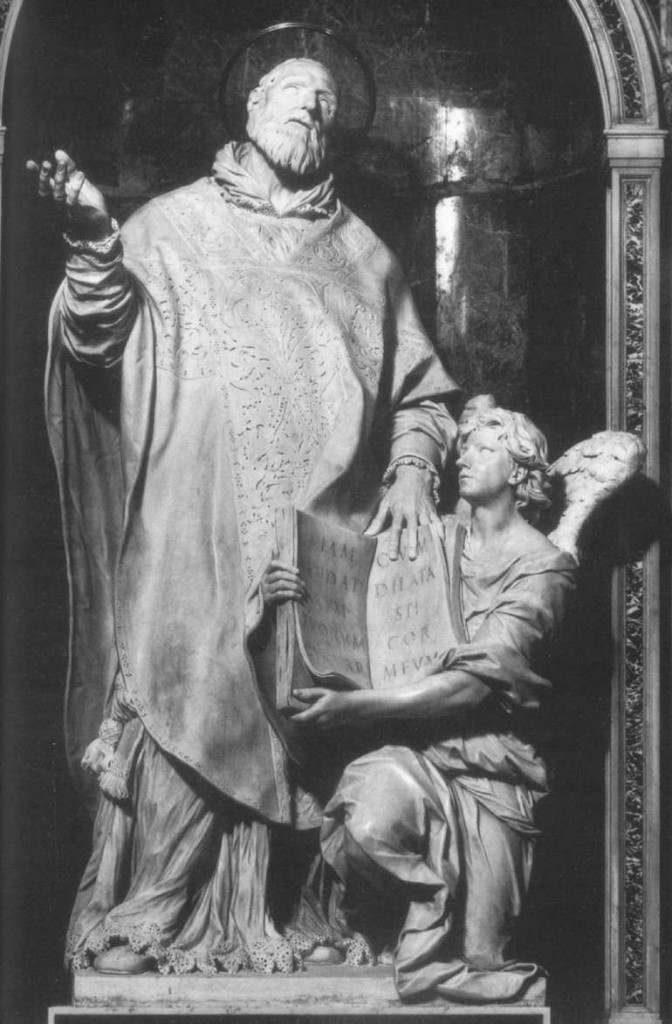Appel à communication : « The Saints of Rome » (Académie hongroise de Rome, 4-6 octobre 2017)
-
End date:15/03/2017, 00:00
-
Place:ACCADEMIA D'UNGHERIA IN ROMA, PALAZZO FALCONIERI, 4-6 OCTOBRE 2017, ACCADEMIA D'UNGHERIA IN ROMA, PALAZZO FALCONIERI

ALGARDI, Alessandro
St Philip Neri
1636-38
Marble, height c. 300 cm
Santa Maria in Vallicella, Rome
Rome, October 4 – 06, 2017
Deadline: Mar 15, 2017
The Hungarian Hagiography Society and the Croatian Hagiography Society
Hagiotheca organize the 6th HAGIOTHECA Conference
The Saints of Rome: Diffusion and Reception from late Antiquity to the Early Modern Period
Rome, 4-6 October 2017
Accademia d’Ungheria in Roma
Palazzo Falconieri, Via Giulia 1, Rome
The saints of Rome have always been among the most venerated and the most popular heavenly patrons in Christendom, grafting the noble air of universality and integration onto emerging Christian cultures. From the apostles and Early Christian martyrs through the Early Modern period and beyond, the textual and material dissemination of Roman saints made a significant impact on the rise of the cult of the saints. Saints living in Rome (from Bridget of Sweden to Catherine of Siena and from Francesca Ponziani to Filippo Neri) were role models all over the Christian world. Post-Tridentine Roman cults spread by the Society of Jesus and the revival of catacomb cults brought a new wave in the world-wide cult of the saints of Rome in the early modern period.
What strategies, mechanisms and considerations informed the spread of the cult of the saints of Rome? Who were the actors: Roman ecclesiastical hierarchy or local communities? How did these cults transform through local reception in diverse local contexts? How did pilgrimages and Jubilees promote the cults of Roman saints? Did « Romanness » assure efficacious links with the centre of Christendom or possess a symbolical meaning? In what ways did the saints of Rome impact local saints’ cults?
The conference aims at discussing the ways in which the cults of the saints of Rome were accepted and negotiated, defined and redefined over the centuries in Latin Christianity. What is the politics of the export and import of Roman saints? To what extent do Roman saints shape and define medieval and Early Modern Latin culture in the new Christianities of Europe, Asia, and America? Does the export of the saints conform to individual and regional interests or rather to the political and cultural agenda of the papacy? Inquiries on these issues in various media (texts, images, relics, devotional objects and architecture, liturgy, music) are welcome. We invite papers dealing with the genesis and expansion of Roman saints’ cults from the fourth to the seventeenth century focusing on, but not limited to topics such as:
– the politics (mechanisms and goals) of the diffusion of Roman saints’ cults in Latin Christianity and beyond
– impresarios of the promotion of Roman saints’ cults
– the means of diffusion – art, liturgy, relics
– intra- and inter-regional influences, the transfer of models of
sainthood
– the transformation of Roman saints abroad and the dynamics of territorial differences
– the creation of a Roman identity for foreign saints
Please send your 300-word abstract of a 20-minutes paper by 15 March
2017 to: sanctiromae@gmail.com
Notifications about acceptance will be sent out by 30 March. The official language of the conference is English. A registration fee of 70 euros/person will be requested to cover the costs of the
information package and the conference dinner. A cocktail reception will be offered by the Hungarian Academy in Rome. Conference participants will be provided with contacts for accommodation at conference prices close to our venue, but are kindly asked to arrange
the booking on their own.
The proceedings will be published in the Hagiotheca Series Colloquia by the Croatian Hagiography Society.
Organisation committee:
Gábor Klaniczay (Central European University – Hungarian Hagiography Society)
Ana Marinković (University of Zagreb – Croatian Hagiography Society ‘Hagiotheca’)
Marianne Sághy (Central European University – Hungarian Hagiography Society)
Trpimir Vedriš (University of Zagreb – Croatian Hagiography Society ‘Hagiotheca’)).